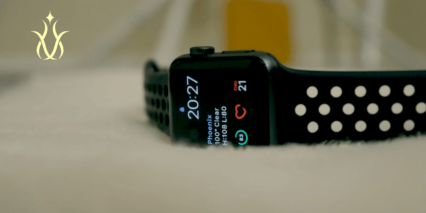Biofeedback therapy offers a unique approach to improving health by teaching you to control physiological functions such as heart rate, muscle tension, and blood pressure. This comprehensive guide explores the numerous benefits of biofeedback therapy, including its effectiveness in treating chronic pain, anxiety, headaches, and digestive disorders. Understand the different types of biofeedback techniques—such as thermal, electromyography, and neurofeedback—and how they work to enhance your ability to regulate your body’s responses to stress and illness.
Discover how biofeedback can be a powerful tool in your wellness arsenal, helping you to achieve greater emotional and physical health.
Introduction to Biofeedback Therapy
Applied psychophysiology and biofeedback are remarkable techniques gaining increasing recognition. A biofeedback session empowers individuals to gain control over their bodily functions and improve their overall well-being by providing real-time feedback on their physiological signals. This innovative approach has garnered significant interest among healthcare professionals and patients alike due to its potential to address a wide range of conditions and promote self-regulation.
In essence, biofeedback treatment involves measuring physiological signals such as heart rate variability (HRV), electrodermal activity (EDA), respiration rate, muscle tension (EMG), brainwave activity (EEG), and other vital signs. These signals are captured and translated through sensors and monitoring devices into accessible information, allowing individuals to observe and understand their own bodily responses.
The relevance of biofeedback therapy in healthcare stems from its ability to provide valuable insights into the mind-body connection. By harnessing the power of this connection, individuals can learn to modify their physiological responses, leading to improvements in various areas of their health and well-being. Integrating biofeedback techniques with mindfulness practices, relaxation exercises, and cognitive-behavioural strategies further amplifies its potential for promoting mind-body connection and overall wellness.
Evidence-based research consistently demonstrates the efficacy of biofeedback treatment in various clinical settings. Studies have shown its effectiveness in reducing stress levels, improving heart rate variability, enhancing cognitive function, managing chronic pain, and promoting emotional well-being. For instance, a randomised controlled trial published in the Journal of Pain Research revealed that biofeedback-based relaxation techniques significantly reduced chronic pain intensity and improved the quality of life for individuals with low back pain. Similarly, a systematic review published in the Journal of Clinical Psychology demonstrated the efficacy of biofeedback treatment in reducing symptoms of anxiety and depression.
Key Physiological Signals in Biofeedback Therapy
Heart Rate Variability (HRV)
HRV refers to the variations in time intervals between consecutive heartbeats. It measures the flexibility and adaptability of the autonomic nervous system. Higher HRV indicates a healthier cardiovascular system and reflects better stress management capabilities. Research has shown that individuals with higher HRV experience lower stress levels and better emotional well-being. Monitoring and training HRV through biofeedback techniques can help individuals enhance their stress resilience and achieve a balanced autonomic nervous system.
Electrodermal Activity (EDA)
Electrodermal activity, also known as galvanic skin response, measures changes in sweat gland activity. EDA is closely linked to emotional arousal, stress, and anxiety. When we experience heightened emotional states or stress, our sweat gland activity increases, leading to changes in skin conductance. By monitoring EDA, biofeedback therapy can provide insights into emotional arousal levels and help individuals learn strategies to regulate their stress responses.
Studies have demonstrated the effectiveness of EDA biofeedback in reducing anxiety and promoting emotional well-being.
Respiration Rate
Monitoring respiration rates can offer valuable information about stress levels and relaxation states. Slow and controlled breathing patterns are associated with relaxation and stress reduction. A biofeedback session can help individuals become more aware of their breathing patterns and guide them in achieving a calm and balanced respiration rate. It can be particularly helpful for patients with chronic obstructive pulmonary disease.
This technique has been shown to reduce anxiety and effectively promote relaxation.
Muscle Tension (EMG)
Electromyography (EMG) is used to measure muscle activity and tension. It provides insights into the level of muscle activation. It can be utilised in biofeedback therapy to promote relaxation and muscle control. By monitoring EMG signals, individuals can become aware of excessive muscle tension and learn techniques to release tension and achieve a state of relaxation.
EMG biofeedback has been successfully applied in treating various conditions, including tension headaches, temporomandibular joint disorders, and muscle-related pain.
Brainwave Activity (EEG)
Electroencephalography (EEG) measures the brain’s electrical activity and detects brainwave patterns. EEG biofeedback, also known as neurofeedback, utilises this information to help individuals regulate their brain activity.
Individuals can learn to enhance focus, attention, and cognitive performance by providing real-time feedback on brainwave patterns. For example, EEG biofeedback has shown promising results in improving attention deficits, enhancing cognitive abilities, and reducing symptoms of conditions such as ADHD and anxiety.
Skin Temperature and Blood Pressure Monitoring
Skin temperature thermal feedback and blood pressure monitoring can provide valuable insights into stress response, relaxation, and overall well-being. For example, stressful situations often lead to vasoconstriction, reducing peripheral blood flow and lower skin temperature.
Thermal feedback can help individuals become aware of these physiological responses and guide them in achieving relaxation and stress reduction. Additionally, monitoring blood pressure can benefit individuals with hypertension or those seeking to optimise their cardiovascular health.
Techniques and Applications of Biofeedback Therapy
Biofeedback therapy offers various techniques and applications that can help individuals improve their well-being and address various physical, mental, and emotional concerns. Let’s delve into the specific areas where biofeedback therapy shows promise and explore the techniques utilised for each application:
A. Stress Management and Anxiety Relief
In today’s fast-paced world, stress and anxiety have become increasingly prevalent. Biofeedback therapy provides individuals with effective tools to manage stress and reduce anxiety levels. By increasing awareness of their physiological responses, individuals can gain control over their stress reactions.
One of the techniques commonly used in biofeedback therapy for stress management is Heart Rate Variability (HRV) biofeedback. HRV biofeedback helps individuals regulate their autonomic nervous system by training them to achieve a balanced heart rate variability pattern. Research has shown that HRV biofeedback can reduce anxiety and improve emotional well-being.
Another valuable technique for stress reduction is Electrodermal Activity (EDA) biofeedback. EDA biofeedback measures changes in sweat gland activity, which is closely linked to emotional arousal and stress. By monitoring EDA, individuals can become more aware of their stress responses and learn strategies to regulate them effectively.
B. Pain Management and Chronic Conditions
Biofeedback therapy has proven beneficial in alleviating chronic pain. It offers non-invasive techniques that empower individuals to modulate their physiological responses and reduce pain perception.
EMG biofeedback is often employed to address conditions such as tension headaches and musculoskeletal pain. By monitoring muscle tension levels using electromyography, individuals can learn to relax their muscles and alleviate pain.
Thermal biofeedback is another technique used in pain management. It involves monitoring skin temperature to give individuals real-time feedback on their peripheral blood flow and stress response. By learning to increase peripheral blood flow, individuals can promote relaxation and reduce pain.
Additionally, EEG biofeedback, or neurofeedback, has shown promise in pain management. EEG biofeedback can help reduce pain perception and improve overall well-being by training individuals to modulate their brainwave activity.
C. Performance Enhancement and Cognitive Function
Biofeedback therapy also plays a role in enhancing performance and cognitive function.
EEG biofeedback is particularly effective in improving attention and cognitive performance. By training individuals to enhance specific brainwave patterns associated with focus and concentration, EEG biofeedback can lead to improved cognitive abilities.
HRV biofeedback is also utilised for optimal performance. It helps individuals achieve a state of physiological coherence, where the autonomic nervous system is in balance. This coherence enhances performance by fostering mental clarity, emotional stability, and resilience to stress.
D. Emotional Regulation and Mental Health
Biofeedback therapy has shown promise in aiding emotional regulation and treating various mental health conditions. In addition, it offers individuals valuable tools to understand and modulate their emotional responses.
For individuals with depression, anxiety disorders, and post-traumatic stress disorder (PTSD), biofeedback therapy can be beneficial. Techniques like HRV biofeedback, EDA biofeedback, and EEG biofeedback can help individuals regulate their emotional responses and improve their mental well-being.
E. Wellness Promotion and Mind-Body Connection
Promoting overall wellness and strengthening the mind-body connection are integral aspects of biofeedback therapy. Individuals can achieve balance and well-being by integrating biofeedback techniques with mindfulness practices and relaxation exercises.
Practising mindfulness alongside biofeedback techniques enhances self-awareness and self-regulation. In addition, mindfulness meditation and deep breathing exercises, combined with biofeedback, can amplify the relaxation response and promote a sense of calm.
Biofeedback Devices for Home Use
Biofeedback devices designed for home use have revolutionised the field of biofeedback therapy. These portable devices provide individuals with real-time feedback on their physiological signals, allowing them to gain insights and make positive changes to their health and well-being.
The availability of biofeedback equipment for home use is a significant advancement in healthcare. In the past, biofeedback therapy was primarily conducted in clinical settings, limiting its accessibility to a broader population. Now, individuals can use these devices to monitor and regulate their physiological responses in the comfort of their homes.
These biofeedback devices empower individuals to participate actively in their healthcare journey. By monitoring their physiological signals, individuals can better understand their body’s responses to various stimuli. This self-awareness is crucial in promoting positive changes and achieving optimal well-being.
One of the key advantages of biofeedback equipment for home use is their convenience. Individuals no longer need to schedule appointments or travel to clinics to receive biofeedback therapy. They can now integrate biofeedback sessions into their daily routines, making it easier to incorporate biofeedback as a regular practice.
The accessibility of biofeedback therapy through home use devices has opened up new possibilities for individuals seeking to enhance their health and well-being. These devices come in various forms, including heart rate variability (HRV) monitors, electrodermal activity (EDA) sensors, EEG headsets, respiration rate monitors, thermometers, and blood pressure monitors.
Heart Rate Variability (HRV) Monitors
HRV monitors are valuable tools for tracking variations in time intervals between heartbeats, providing insights into autonomic nervous system balance and overall health. These portable devices play a crucial role in biofeedback therapy and can be used effectively at home.
By using HRV monitors, individuals can better understand their autonomic nervous system and how it responds to stress. Tracking HRV helps individuals monitor their stress levels and identify patterns that indicate imbalances in the autonomic nervous system. With this knowledge, individuals can then engage in HRV biofeedback training to regulate their stress response and improve their overall well-being.
Research has shown the benefits of HRV biofeedback in reducing stress and promoting relaxation. For example, a study demonstrated that individuals who underwent HRV biofeedback training experienced significant reductions in stress levels and improvements in emotional well-being. Another study found that HRV biofeedback training positively affected autonomic nervous system function and overall cardiovascular health.
Electrodermal Activity (EDA) Sensors
EDA sensors are effective tools for measuring changes in sweat gland activity, correlating with emotional arousal, stress, and anxiety levels. These sensors provide valuable insights into an individual’s stress response and can be utilised for biofeedback therapy at home.
By using EDA sensors, individuals can become more aware of their stress levels and learn to regulate their emotional responses effectively. In addition, EDA biofeedback training at home enables individuals to monitor their EDA signals in real-time and practice techniques that promote relaxation and stress reduction.
Studies have demonstrated the effectiveness of EDA biofeedback in reducing anxiety and improving emotional well-being. For example, research showed that individuals who received EDA biofeedback training experienced significant reductions in anxiety levels and reported improved emotional regulation. Another study found that EDA biofeedback training effectively reduced stress and promoted a sense of calm.
EEG Headsets
EEG headsets are valuable devices that monitor brainwave activity, providing insights into cognitive function and mental states. In addition, these portable devices allow individuals to engage in EEG biofeedback training at home, enhancing attention and cognitive performance.
By using EEG headsets, individuals can better understand their brainwave patterns and learn to modulate them effectively. In addition, EEG biofeedback training at home allows individuals to engage in exercises and games specifically designed to improve attention and cognitive abilities.
Numerous studies have demonstrated the efficacy of EEG biofeedback in attention improvement. For example, in a study, individuals who underwent EEG biofeedback training showed significant improvements in attention span and cognitive performance. Another study found that individuals who received EEG biofeedback training experienced enhanced cognitive abilities and reported better focus and concentration.
Respiration Rate Monitors
Respiration rate monitors are valuable tools for measuring breathing patterns and promoting relaxation and stress reduction. In addition, these portable devices enable individuals to engage in respiration rate biofeedback training at home, improving their overall well-being.
By using respiration rate monitors, individuals can gain control over their breathing patterns and enhance their relaxation response. Respiration rate biofeedback training involves practising paced breathing exercises, which have been shown to promote relaxation and reduce stress.
Studies have highlighted the positive effects of respiration rate biofeedback on stress reduction. For example, research demonstrated that individuals who practised respiration rate biofeedback experienced significant decreases in stress levels and reported increased feelings of calmness. Another study found that respiration rate biofeedback training was effective in improving relaxation and overall well-being.
Thermometers and Blood Pressure Monitors
Thermometers and blood pressure monitors are valuable home-based biofeedback devices, providing insights into stress response and cardiovascular health. These portable devices enable individuals to monitor their physiological parameters and make informed decisions to improve their well-being.
By monitoring skin temperature and blood pressure, individuals can gain awareness of their stress response and cardiovascular health. This information can be used with relaxation techniques to promote stress reduction and well-being.
Relaxation techniques, such as deep breathing exercises, progressive muscle relaxation, and mindfulness meditation, have been shown to positively impact skin temperature and blood pressure. These techniques facilitate the activation of the relaxation response and promote a sense of calmness.
Conclusion
Biofeedback devices designed for home use allow individuals to actively participate in their biofeedback therapy and improve their health and well-being.
HRV monitors, EDA sensors, EEG headsets, respiration rate monitors, thermometers, and blood pressure monitors provide valuable insights into physiological signals, enabling individuals to regulate their stress response, emotions, cognitive function, and overall cardiovascular health.
By incorporating these devices into their biofeedback therapy routine at home, individuals can optimise the benefits of biofeedback and enhance their well-being.
Frequently Asked Questions about Biofeedback Therapy
What is Biofeedback?
Biofeedback therapy is a non-pharmacological treatment modality that involves the use of electronic or electromechanical equipment to monitor, record, and feed back information about physiological processes to an individual. The goal is to enable individuals to gain voluntary control over these processes, which are typically autonomic in nature, for therapeutic purposes.
Common modalities for biofeedback include surface electromyography, respiration rate and depth, skin surface temperature, cardiovascular reactivity, and electrodermal response.
Biofeedback therapy has been shown to be efficacious or probably efficacious in treating a number of medical disorders, such as tension-type headaches, hypertension, cardiovascular diseases, musculoskeletal conditions, epilepsy, and anxiety.
The American Academy of Pediatrics has recognized biofeedback as a tool that can help pediatric patients observe the immediate, objective mind-body interactions and learn to control their body’s physiological response, which is particularly relevant for today’s tech-savvy youth.
Clinical improvement from biofeedback therapy can vary depending on the condition being treated and individual patient factors. For instance, in pediatric patients with dysfunctional voiding, most cases that improve do so by 3 months, with a slower rate of improvement after session 8, and a maximum benefit may be expected up to 9 months of therapy.
Biofeedback interventions are increasingly embraced by both the public and healthcare providers, and with advancements in technology, there is potential for biofeedback to be delivered in more engaging and personalized formats, such as virtual reality or exergaming technology.
How does Biofeedback Therapy work?
Biofeedback therapy works by monitoring and providing real-time feedback on physiological functions, which are typically autonomic, with the aim of teaching patients to exert voluntary control over these functions. The process is grounded in psychological learning theory, particularly operant conditioning. It involves the representation of physiological signals, such as muscle tension, skin temperature, heart rate, and respiration, as visual or auditory feedback that the patient learns to modify.
The therapy uses equipment to measure physiological activity and then translates these measurements into a form that patients can understand and use as a basis for learning self-regulation. For example, electromyography (EMG) biofeedback measures muscle activity and can be used to help patients learn to relax specific muscles. Similarly, heart rate variability (HRV) biofeedback provides information on the cardiac cycle, which can be used to improve autonomic regulation and potentially affect cognitive functions.
The goal of biofeedback is to enable patients to gain awareness and control over their physiological processes, which can lead to improvements in health conditions influenced by stress and autonomic dysregulation. The therapy is delivered through various modalities, including visual displays, acoustic signals, or haptic feedback, and can be adapted to include newer technologies such as virtual reality for enhanced engagement.
Sensors attached to your skin send information to a monitor, displaying a sound, flash of light, or image representing your body’s changes in real-time. This feedback helps you focus on making subtle changes to your body, such as relaxing certain muscles, to achieve desired results, such as reducing pain. With the guidance of a trained biofeedback therapist, you learn to understand these signals and make conscious adjustments to achieve a healthier state.
In essence, biofeedback gives you the power to use your thoughts to control your body, often to help with a health condition or physical performance. The physiological functions that are commonly measured include brainwaves (via EEG), heart rate (via EKG), muscle tension (via electromyography), skin temperature, and sweat gland activity.
What is the most common biofeedback?
Biofeedback techniques are diverse, addressing various physiological functions. However, there are a few types that are particularly common and widely used in both clinical and personal settings:
- Heart Rate Variability (HRV) Biofeedback: This technique involves monitoring variations in the intervals between heartbeats. HRV is associated with the body’s stress response, and learning to control it can help with stress management and emotional regulation.
- Electromyography (EMG) Biofeedback: EMG biofeedback focuses on muscle tension. Sensors placed on the skin can detect electrical signals produced by muscle fibres when they contract, helping individuals to understand and control their muscle tension. This technique is often used for conditions related to muscle tension, such as tension headaches or back pain.
- Thermal Biofeedback: This method monitors skin temperature, usually at the fingertips. Because our extremities often cool down under stress (due to blood being redirected to vital organs), learning to control skin temperature can be a method for managing stress and anxiety.
- Neurofeedback (EEG Biofeedback): This technique involves using electroencephalography (EEG) to monitor brainwave activity. By observing their own brainwave patterns in real time, individuals can learn to influence their mental state, which can be useful in managing conditions like ADHD, anxiety, and sleep disorders.
- Respiratory Biofeedback: This involves tracking breathing rate and pattern. Controlled, deep breathing can induce relaxation and stress relief. This type of biofeedback can be beneficial for stress-related disorders and certain cardiovascular conditions.
What conditions can Biofeedback Therapy treat?
Biofeedback treatments have been used effectively in treating a range of conditions, including chronic pain, anxiety, high blood pressure, tension headaches, and urinary incontinence. Recent studies also highlight its potential in managing conditions like insomnia and attention deficit hyperactivity disorder (ADHD).
How successful is Biofeedback Therapy?
The success of biofeedback therapy can depend on the specific application, as well as the individual’s commitment to the process and practice. Here’s a look at how effective biofeedback can be:
- Stress and Anxiety: Biofeedback is widely recognized for its effectiveness in managing stress and anxiety. By providing real-time data on physiological responses such as heart rate variability, breathing, and muscle tension, biofeedback can help individuals learn to control their stress response and achieve a state of relaxation.
- Chronic Pain: Biofeedback can assist in managing various forms of chronic pain, including migraines, tension headaches, and fibromyalgia. It can help individuals better understand their body’s response to pain and develop strategies to manage it.
- Cardiovascular Conditions: Certain forms of biofeedback, such as heart rate variability and respiratory biofeedback, have shown promise in managing conditions like hypertension.
- Urinary and Fecal Incontinence: Biofeedback has successfully treated urinary and faecal incontinence, especially when combined with other treatments like pelvic floor exercises.
- ADHD: Neurofeedback, a specific form of biofeedback that uses real-time displays of brain activity, has been used to help manage ADHD by teaching the individual to alter their brain waves.
- Insomnia and Sleep Disorders: Biofeedback can assist in identifying and managing the physical responses that might contribute to insomnia, helping to improve sleep quality.
It’s important to remember that while biofeedback can be highly effective, its success can vary from person to person and condition to condition. It often requires regular practice and patience, as it involves learning new skills and changing habitual patterns. Furthermore, biofeedback is often most effective when combined with other treatments within a comprehensive care plan.
Are there any side effects of Biofeedback Therapy?
Biofeedback treatments are considered safe with minimal side effects. However, it’s important to undergo biofeedback therapy under the guidance of a certified professional to ensure appropriate technique and prevent misinterpretation of the feedback.
How many Biofeedback Therapy sessions will I need?
The number of biofeedback sessions needed varies depending on the individual and the condition being treated. While some people might see improvements after a few sessions, others may need more extensive therapy. Always consult with a certified biofeedback therapist to devise a treatment plan best suited to your needs.
Can you do Biofeedback on yourself?
While biofeedback is often performed in a clinical setting with a trained professional, there are indeed methods you can use for self-biofeedback. Here’s how you might approach this:
- Understand the Principles: Biofeedback is based on mind-body connection principles. The key idea is that by becoming aware of physiological functions normally outside of conscious control, you can learn to influence them.
- Biofeedback Devices: Several devices on the market are designed for personal use that can provide biofeedback. These devices often connect to apps on your smartphone and may monitor things like heart rate, breathing rate, skin temperature, and more.
- Relaxation Techniques: Techniques such as deep breathing, progressive muscle relaxation, guided imagery, and mindfulness meditation can be used in conjunction with biofeedback. For instance, you might use a device to monitor your heart rate while practising deep breathing, aiming to lower your heart rate through relaxation exercises.
- Consistency and Practice: Like any new skill, self-biofeedback requires regular practice. Over time, you can become better at recognizing your body’s signals and learning how to influence them.
- Professional Guidance: While self-biofeedback can be beneficial, it’s important to remember that professional biofeedback therapists have specialized training to guide you through the process and interpret the data from the biofeedback devices. If you have a specific medical or mental health condition you’re hoping to manage with biofeedback, it’s advisable to seek professional guidance.
- Maintain Realistic Expectations: While biofeedback can be a helpful tool for managing stress, improving relaxation, and contributing to overall well-being, it is not a cure-all. It’s best used as part of a comprehensive approach to health and wellness.
Can I practice Biofeedback techniques at home?
Yes, with the help of portable biofeedback devices and after initial training from a certified therapist, you can practice some biofeedback techniques at home. However, regular check-ins with your therapist are crucial to ensure you’re using the device correctly and effectively.
What are the Best Brands of Biofeedback devices?
Several reliable brands offer home biofeedback devices, each with unique features tailored to different needs. Here are a few notable ones to consider:
- Muse: Muse offers an EEG device in the form of a headband that provides real-time feedback on brain activity. It’s widely used for meditation and stress relief.
- HeartMath: HeartMath provides several devices that focus on heart rate variability (HRV) biofeedback, which can be beneficial for managing stress and improving emotional well-being.
- Alive Clinical: Alive Clinical offers a biofeedback system that monitors heart rate variability, skin sweat response, and temperature, all of which can be useful in managing stress, anxiety, and other related conditions.
- emWave2: Another product from HeartMath, the emWave2, is a portable biofeedback device that also monitors HRV, allowing users to practice stress management techniques on the go.
- NeuroSky: NeuroSky offers EEG biosensors in headsets that are used in a variety of applications, including meditation, concentration improvement, and sleep training.
- Wild Divine: Wild Divine offers a biofeedback system combined with a meditation program, which can help users understand their stress responses and learn relaxation techniques.
Resources:
Tolin DF et al (2020). Biofeedback and Neurofeedback for Anxiety Disorders: A Quantitative and Qualitative Systematic Review. Available from: https://link.springer.com/chapter/10.1007/978-981-32-9705-0_16
Moravec CS (2008). Biofeedback therapy in cardiovascular disease: rationale and research overview. Available from: https://pubmed.ncbi.nlm.nih.gov/18540144/
Mayo Clinic (2021). Biofeedback. Available from: https://www.mayoclinic.org/tests-procedures/biofeedback/about/pac-20384664
National Center for Biotechnology Information, U.S. National Library of Medicine (2017). Biofeedback in medicine: who, when, why and how? Available from: https://www.ncbi.nlm.nih.gov/pmc/articles/PMC2939454/
Psychology Today (2021). Biofeedback. Available from: https://www.psychologytoday.com/us/therapy-types
WebMD (2020). Biofeedback. Available from: https://www.webmd.com/a-to-z-guides
Disclaimer: This article is for informational purposes only and should not replace professional medical advice. If you have specific concerns or medical conditions, it is recommended to consult with a healthcare professional for personalised guidance and support.
Related Topics:
Sleep Tracking Apps and Monitors: Which One Is Right for You?
Mindfulness for Improved Focus and Productivity at Work: The Connection Between Meditation and Productivity.






